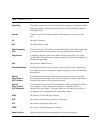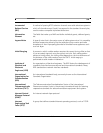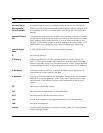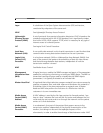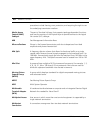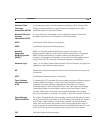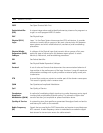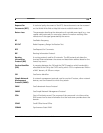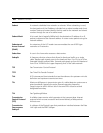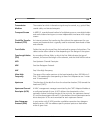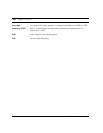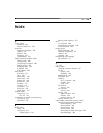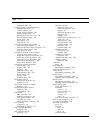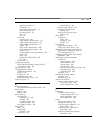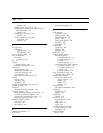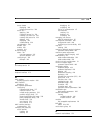
ADC Telecommunications, Inc.
606 A
PPENDIX C: GLOSSARY
Subnet A network subdivided into networks or subnets. When subnetting is used,
the host portion of the IP address is divided into a subnet number and a host
number. Hosts and routers identify the bits used for the network and subnet
number through the use of a subnet mask.
Subnet Mask A bit mask that is logically ANDed with the destination IP address of an IP
packet to determine the network address. A router routes packets using the
network address.
Subnetwork
Access Protocol
(SNAP)
An extension of the LLC header to accommodate the use of 802-type
networks as IP networks.
Subscriber A user in the home who accesses a data service.
Subsplit A frequency-division scheme that allows bi-directional traffic on a single
cable. Reverse path signals come to the head-end from 5 to 30 (up to 42 on
Extended Subsplit systems) MHz. Forward path signals go from the head-end
from 50 or 54 MHz to the upper frequency limit of the cable network.
TCP See Transmission Control Protocol.
TFTP See Trivial File-Transfer Protocol.
Tick 6.25-microsecond time intervals that are the reference for upstream mini-slot
definition and upstream transmission times.
Tilt Maximum difference in transmission gain of a cable television system over a
given bandwidth (typically the entire forward operating frequency
range).instant at which the last bit of the same PDU crosses a second
designated boundary.
TLV See Type/Length/Value.
Transmission
Control Protocol
(TCP)
A reliable stream service which operates at the transport-layer Internet
protocol which ensures successful end-to-end delivery of data packets
without error.
Transmission
Convergence
Sublayer
A sublayer of the Physical Layer that provides an interface between the Data
Link Layer and the PMD Sublayer.



